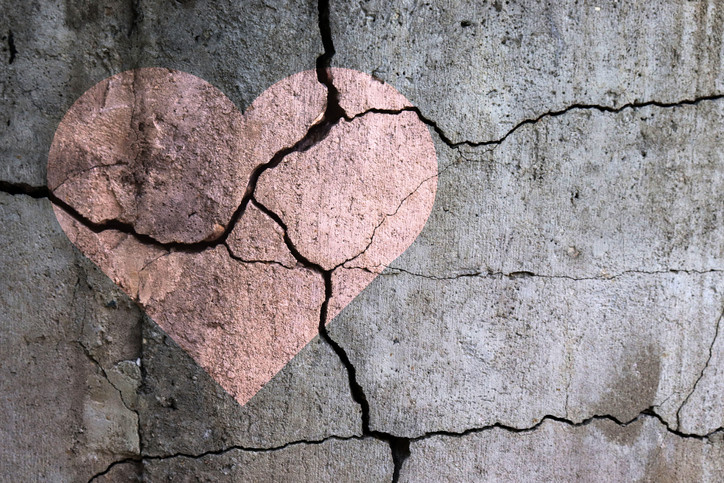Untangling grief: Living beyond a great loss

“The horse has left the barn.”
Those six words, said by my husband’s oncologist, changed our lives forever, although the sense of impending loss had begun weeks earlier with a blood test. There would be more tests, exams, and visits to specialists. As George and I waited for a definitive diagnosis, we bargained with ourselves and with the universe. When we finally met with the cancer treatment team to review all the tests, George’s 6-foot 2-inch frame struggled to fit into the space at the small table, where we strained to follow the conversation. Hearing the word metastatic — meaning cancer had spread throughout his body — was like fingernails on a blackboard.
But there’s no real way to prepare for grief, an inescapable feature of the human condition. Its stress following the death of a loved one can lead to physical illness: cardiovascular diseases, broken-heart-syndrome (takotsubo cardiomyopathy), cancers, and ulcers. Emotional distress often sparks physical distress known as somatic symptoms. How each person navigates grieving varies. Comfort takes different forms for different people. While my journey is individual, my story touches on universal themes, particularly for those grieving in the time of COVID-19.
Anticipatory grief strikes first
George’s diagnosis was advanced metastatic prostate cancer, spread to lymph nodes and bone. There would be no surgery. No radiation. No chemotherapy. Only palliative care.
Some days George wanted to talk only with me. Other days he wanted to talk with those who were “in the same boat.” He saw himself as washed up on the shores of a new, unknown continent. I felt washed up with him. The National Cancer Institute describes these feelings as anticipatory grief, a reaction that anticipates impending loss.
In time, we returned to everyday routines. Sometimes we laughed and didn’t think about his illness. George even conceived of and hosted an annual party for his best friends — men who would be his pallbearers — and their partners. The “pallbearer party,” as it came to be known, was a wonderfully raucous event. Grown men laughed until they cried. Each year, by the end of the night, I knew the tears were for anticipated loss.
George lived another 11 years, more than twice what was expected. But anticipating his loss did not cushion my broken heart.
Acute grief following a death
George died in May 2020, at the beginning of the COVID-19 lockdown. Despite the pallbearers’ dress rehearsals, there was no funeral, no gathering of loved ones. Nothing to soothe my overwhelming pain.
In those first few weeks, time seemed stretched thin, moments repeating themselves like musical notes on a scratched record. I felt untethered, unmoored, adrift. My sides ached from crying; my knees were unsteady. I don’t recall eating.
At the funeral home, when I saw George in a casket, the large room seemed bright from lights hitting the shiny wood floor. Later, I realized the room was much smaller and dimmer than I remembered, its floor not shiny but covered by oriental rugs. Burgundy drapes kept out the sun. As I took in the scene, so different from my recollection, my chest heaved and spasmed.
Such physical reactions and perceptions are common in acute grief. The death of a loved one is accompanied by waves of physical distress that can include muscle aches, shortness of breath, queasy stomach, and trouble sleeping. Food may have no taste, and some experience visual hallucinations. The grief-stricken may not believe their loved one is dead.
Grief in the time of COVID-19
Restrictions to help prevent the spread of COVID-19 disrupted social rituals that connect us during grief. In The Atlantic, Ed Yong describes this absence of much-needed support as the “final pandemic betrayal.”
Although my husband died of cancer, not COVID, I experienced the loss of comforting rituals and the sense that my grief was never truly acknowledged. Experts call this disenfranchised grief. Some predict that prolonged grief disorder driven by this pandemic may reach rates seen only in survivors of natural disasters and wars.
Grief is proof of love
Losing loved ones is not easily incorporated into our life story, though it becomes part of it. The finality and acceptance of a monumental loss takes time. In The Year of Magical Thinking, Joan Didion captures the sudden tragic death of her husband: “John was talking and then he wasn’t.” Life changes in an instant. Yet it takes time to untangle and embrace all that it means.
My life must now be reconfigured and re-envisioned without George. Letting go of grief happens haltingly. Gradually, I noticed that more of my memories of George were happy ones, slowly crowding out the all-consuming early intensity of grief. With time I began to re-engage with the world.
Just as George had, I found I wanted to talk with others in the same boat. A bereavement group helped. I began to exercise more. That helped too. When our dogs died, I got a new puppy. Above all, I learned to be kind to myself.
If you, too, are struggling with loss, experts advise some basics: try to eat, sleep, and exercise regularly; consider a bereavement group or seek out others experiencing grief; stay open to new possibilities — new hobbies, people, and opportunities. Talk to a professional if, after months, you are preoccupied with thoughts of your loved one or find no meaning in life without them. These may be signs that your grief is stalled or prolonged. Effective treatment can help.
Every “first” without George — the first birthday, first wedding anniversary, first anniversary of his death — awakened the early days of intense grief. Still, the experience of living through each made me realize I could survive. I think George would be pleased.
